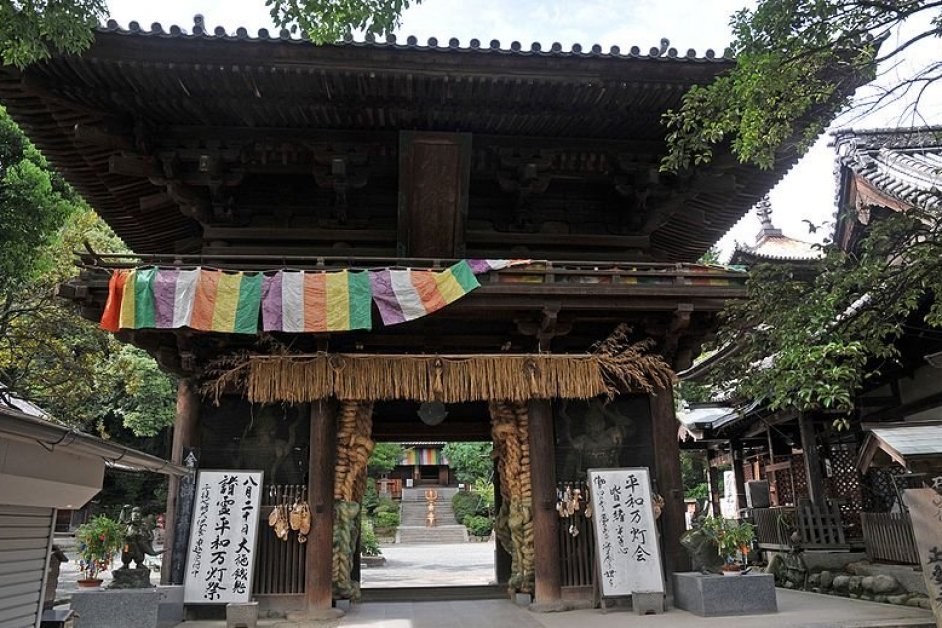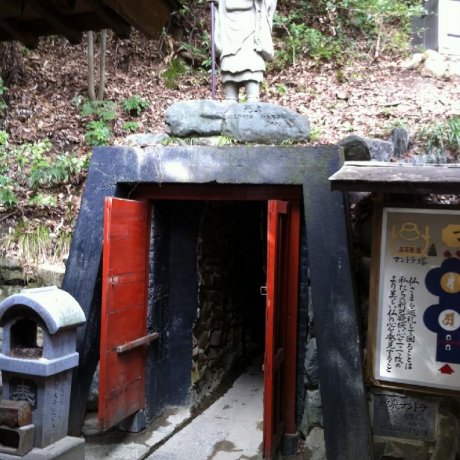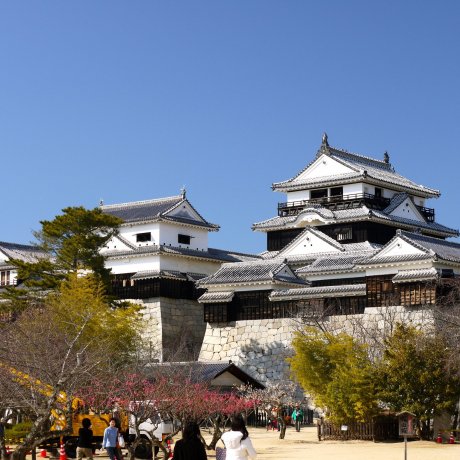
A Disturbing Temple: Ishiteji 51
Arlene BastionIshetiji Temple 51's eclectic collection of different gods and deities can be disturbing because one can't find order in..

At Matsuyama’s most famous temple, a sight almost as guaranteed as the temple buildings themselves is the cadre of pilgrims in white traveling the Shikoku Pilgrimage, a circular 88-site, 1200-kilometer circuit. Whether you’re at Ishiteji for religious, ascetic or sightseeing reasons, the compound is sprawling and quite unusual.
On both sides of Niomon Gate (a National Treasure) are two monumental straw sandals, promising relief for those suffering with painful leg conditions. As you reach the main area, you’ll be greeted by even more curiosities. Stroll through the main hall, itself lined with vibrant panel paintings, enter a cave and you reach yet another temple. This inner structure resembles a large golden bead and contains a famously eclectic collection of sculptures, carvings and paintings. Particularly arresting are the images of the skeletal historic Buddha in the period before his enlightenment. Accompanying these are countless Kannon figures, dwarves, demons and deities. Kobo Daishi, a famous Buddhist monk who supposedly originated the Shikoku Pilgrimage, is immortalized in a towering statue on a nearby forested hill. On top of its treasure-packed halls, a three-story pagoda occupies the main grounds.
Ishiteji, which literally means “stone hand temple,” has an origin story as unique as its contents. A man had wronged Kobo Daishi and, wanting to atone, established the path of the Shikoku Pilgrimage in search of the monk. When they finally met, Kobo forgave him and gave him an inscribed stone with which he was buried. Then a boy was born with a stone clenched in his hand; this boy came to build Ishiteji.
The legendary stone is still in a small museum on the compound, surrounded by no shortage of similarly precious relics, treasured buildings and, supposedly, people’s souls. If Ishiteji Temple proves to be sensory overload or a tiring trek, historic Dogo Onsen is a few minutes away.
Ishiteji Temple can be reached by a 15-20 minute bus ride from Dogo Onsen.

Ishetiji Temple 51's eclectic collection of different gods and deities can be disturbing because one can't find order in..

Ishite Temple is a weird place. Ishite-ji, as it's known in Japanese, is No. 51 of the 88 temples that form the Shikoku Pilgrimage...
 11
11
Ishite-ji, Temple No.51 of the Shikoku pilgrimage, is a strange place, but Okuno-in, the temple that stands behind it on the mountain..

The Hotel Patio Dogo is a modern, comfortable hotel overlooking Dogo Onsen Honkan.

Spa Ryokan Dougoya offers a ryokan-like experience in a stylish 1930s building in Dogo for travelers on a budget.

Spa Ryokan Dougoya offers budget accommodation in Dogo with the atmosphere of a traditional ryokan.

Dogo's newest addition to the eating, drinking, art scene, Wani to Sai. Located in an atmospheric corner of Dogo, this "circus..

Dogo no Machiya is a beautiful café with courtyard gardens and stylish Japanese décor. It’s ideal for breakfast, lunch, or a r..

Cafea in Dogo, Matsuyama is a relaxing place in a quiet residential area. It offers great coffee, flavored tea and bread, etc. You..

Thought to be at least 1,000 years old, Isaniwa is one of Japan’s three shrines dedicated to the deity Hachiman. After climbing a long stretch of stone..

Most might not expect to find a French-style villa below Matsuyama Castle, but this elegant construction offers a respite from the bustling town center..

Matsuyama Castle is one of the twelve "original castles" in Japan, i.e. castles that have survived the post-feudal era since 1868 unscathed. It is located..
Your feedback has been sent.